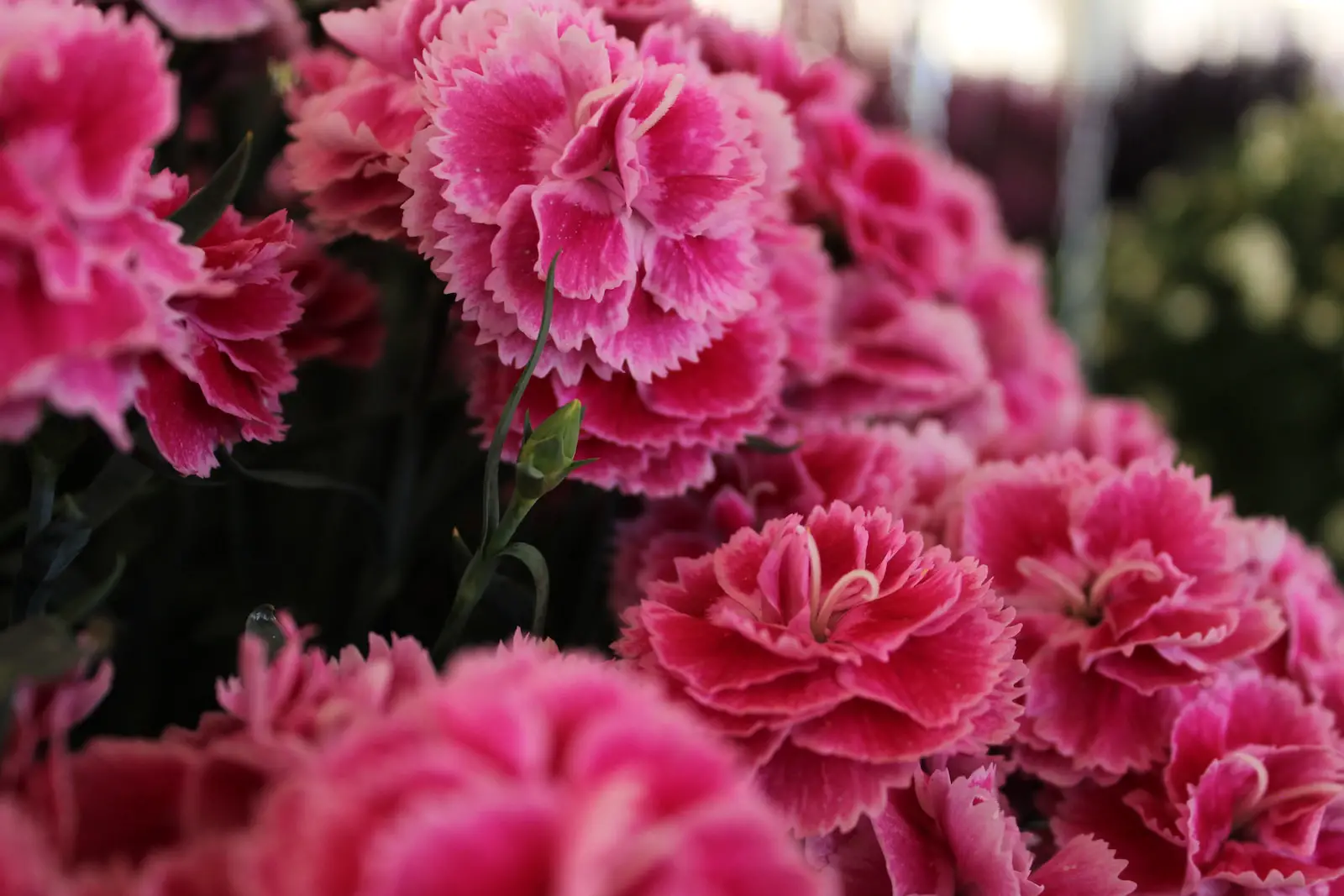Dianthus is a charming and versatile genus encompassing several species and numerous hybrids. Known for their fragrant, colorful flowers and attractive foliage, Dianthus plants are a delightful addition to gardens, borders, and containers. Ranging from carnations to pinks and sweet Williams, Dianthus varieties offer a rich palette of pink, red, white, and even bicolor blooms.
The genus name “Dianthus” originates from the Greek words for divine (“dios”) and flower (“anthos”), reflecting the beauty and grace of these plants. Often blooming from late spring to early autumn, the flowers are particularly loved by butterflies and bees, adding life and movement to the garden. With numerous forms and sizes available, from low-growing ground covers to taller cutting varieties, there is a Dianthus for every garden setting.
Known for being hardy and easy to care for, Dianthus plants are suitable for both beginners and seasoned gardeners. Whether in rock gardens, cottage gardens, or formal flower beds, the versatility, fragrance, and prolonged flowering period of Dianthus make it a highly desirable choice.
| Attribute | Details |
|---|---|
| Common Names | Carnations, Pinks, Sweet Williams |
| Botanical Name | Dianthus |
| Family | Caryophyllaceae |
| Plant Type | Perennial, biennial, annual |
| Mature Size | 6-18 inches tall, 6-24 inches wide |
| Sun Exposure | Full sun |
| Soil Type | Well-drained, slightly alkaline soil |
| Hardiness Zones | 3-9 |
| Native Area | Europe, Asia |
Dianthus Care
Dianthus plants require a sunny location and well-drained soil to thrive. They do not tolerate wet feet, so avoid overwatering. Although they can grow in a variety of soil types, they prefer slightly alkaline soil enriched with organic matter. Regular deadheading will prolong the blooming period and keep the plant looking fresh and tidy.
A layer of mulch can be beneficial to retain moisture and prevent weeds, but care should be taken not to bury the crown of the plant, as this may lead to rot. Fertilizing lightly in the spring and following a good watering schedule, depending on the local climate and soil type, will help the plant flourish.
Light Requirement for Dianthus
Dianthus thrives in full sun, which encourages vibrant flower coloration and a robust blooming cycle.
Soil Requirements for Dianthus
Slightly alkaline, well-drained soil enriched with organic matter is ideal for Dianthus. Avoid heavy, soggy soils that can lead to root rot.
Water Requirements for Dianthus
While Dianthus needs regular watering, especially during dry spells, it’s essential to let the soil dry between waterings to avoid root rot.
Temperature and Humidity
Dianthus is hardy and can tolerate temperature fluctuations. It thrives in Zones 3-9, with varying humidity levels.
Fertilizer
A balanced, slow-release fertilizer applied in early spring can support growth and blooming in Dianthus plants.
Pruning Dianthus
Deadheading spent flowers and trimming back leggy growth will encourage more blooms and maintain a compact shape.
Propagating Dianthus
Dianthus can be propagated through seeds, cuttings, or division. Early spring or fall is the ideal time for division.
How To Grow Dianthus From Seed
Growing Dianthus from seed is straightforward. Sow seeds indoors 6-8 weeks before the last frost or directly outdoors after the danger of frost has passed.
Common Pests & Plant Diseases
Aphids
Aphids can be controlled using insecticidal soap or neem oil.
Crown Rot
Crown rot can be prevented by ensuring proper soil drainage and avoiding overwatering.
Common Problems With Dianthus
Yellowing Leaves
Yellowing leaves may indicate overwatering or poor drainage.
Fewer Flowers
A lack of blooms may be a result of inadequate sunlight or excessive nitrogen fertilization.
Pro Tips
- Select the right Dianthus variety for your specific garden needs and climate.
- Plant Dianthus with companions like lavender, rosemary, or ornamental grasses for attractive combinations.
- Avoid planting Dianthus in areas prone to standing water or heavy clay soils.
- Encourage repeat blooming by deadheading spent flowers regularly.
- Protect Dianthus from harsh winter conditions with a light mulch in colder zones.




